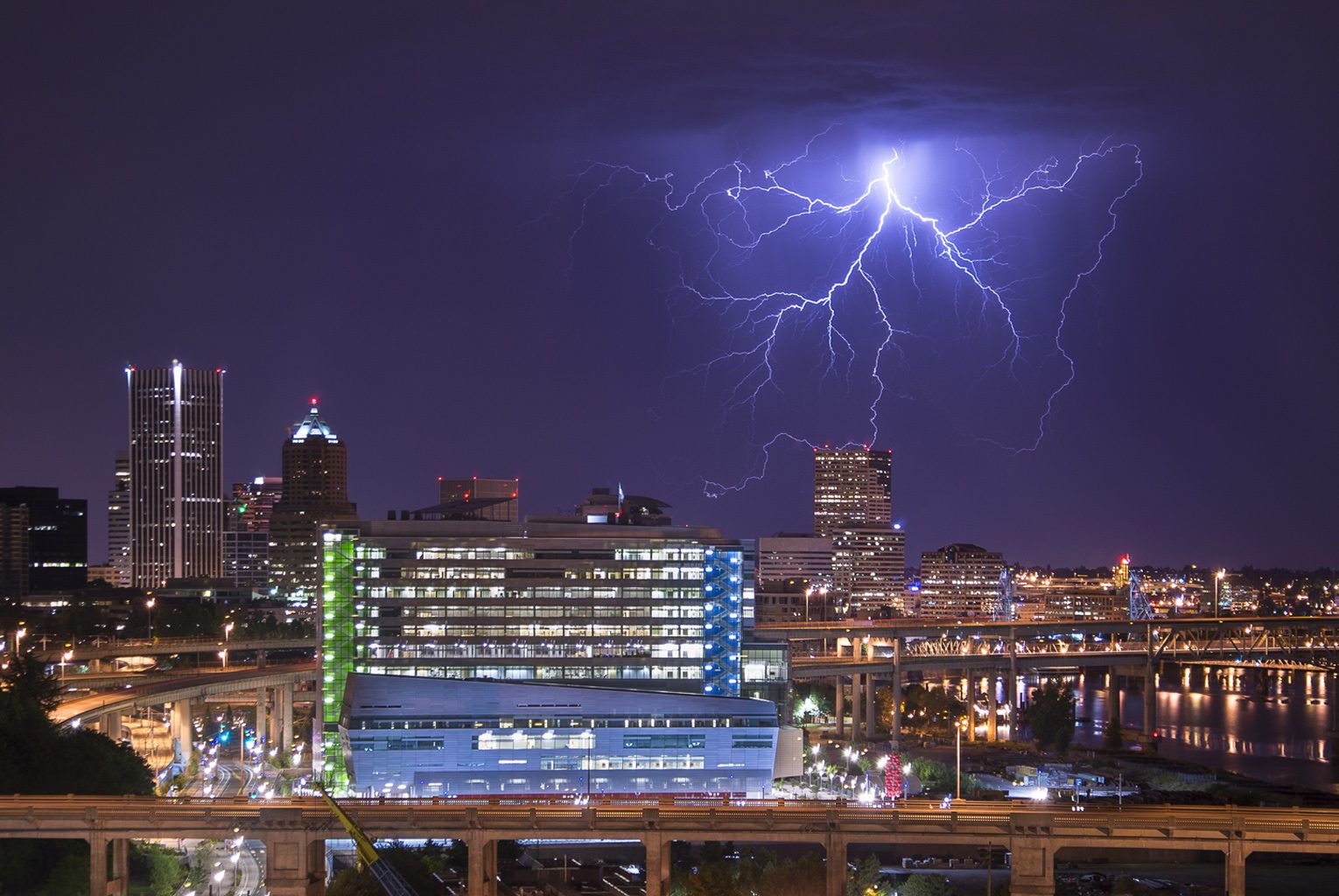
Electrical storms are most common in the summer months, but lightning can strike at any time. When these storms rumble through, they can cause a significant amount of damage in a short period of time.
The National Weather Service reports that lightning strikes about 25 million times a year, killing an average of 49 people in the United States and severely injuring hundreds more. Lightning strikes cost $825 million in homeowners insurance losses in 2016, up 4.5 percent from 2015, according to the Insurance Information Institute.
“Lightning is only one part of the problem,” said Robby Buen, Senior Insurance Manager with AAA Oregon/Idaho. “High winds, heavy rains and fire associated with lightning storms can also be devastating.”
During the Storm
- Seek shelter inside a building and stay away from windows and doorways. Stay indoors for at least 30 minutes after a storm passes. Lightning can strike miles from a storm’s center.
- Avoid contact with conducting pathways, like plumbing pipes, corded phones, televisions, computers and other electronic equipment. Stay away from any appliances that are plugged in, such as toasters and hairdryers.
- Use only a cell phone or cordless telephone during an electrical storm. Ensure that your mobile phone is fully charged, and keep an extra battery or portable battery booster on-hand.
- Delay household activities – doing the dishes, laundry and showering – until after a storm passes. Pipes, faucets and metal sink basins are conduits for electricity and touching them can result in an electrical shock.
- If you are caught outside during a thunderstorm, seek shelter in a hard topped vehicle, or a low area, such as a tunnel. Steer clear of fences, isolated trees, telephone poles, power lines and pipelines.
Lightning Storm Insurance Coverage
Damage caused by lightning, such as fire, is generally covered by standard homeowner or renters insurance policies. Electrical appliances damaged as a result of a lightning-induced power surge may also be covered by a standard policy.
Lightning-caused damage to a vehicle is typically covered under the comprehensive portion of an auto insurance policy.
Lightning storms can often have other impacts to your home and vehicles, including:
- Damage caused by falling trees due to high winds. This kind of damage is typically covered by standard homeowners and auto insurance policies. However, if the tree was known to be weak before the storm, the damage may not be covered.
- A wildfire that results from a lightning storm can cause damage to homes and cars. Insurance coverage for wildfire, even ones caused by lightning, is included in a standard home insurance policy and by the comprehensive coverage of an auto insurance policy.
- Heavy rains can bring flooding, which is not covered by most homeowner policies. Homes damaged by flood may be covered by a separate, optional flood insurance policy, typically provided by the National Flood Insurance Program.
- Damage to cars as a result of flooding is generally covered under the comprehensive portion of auto insurance policies.
To find out more about AAA insurance coverage, call your AAA agent at 1-866-222-7868 to see what discounts you may be eligible for and what type of coverage you might need.


